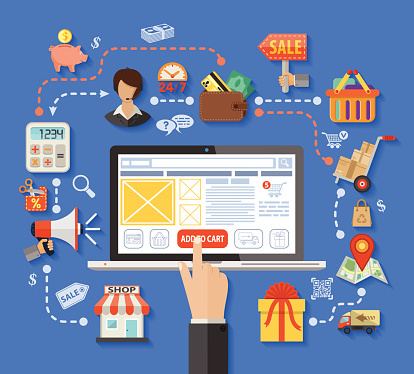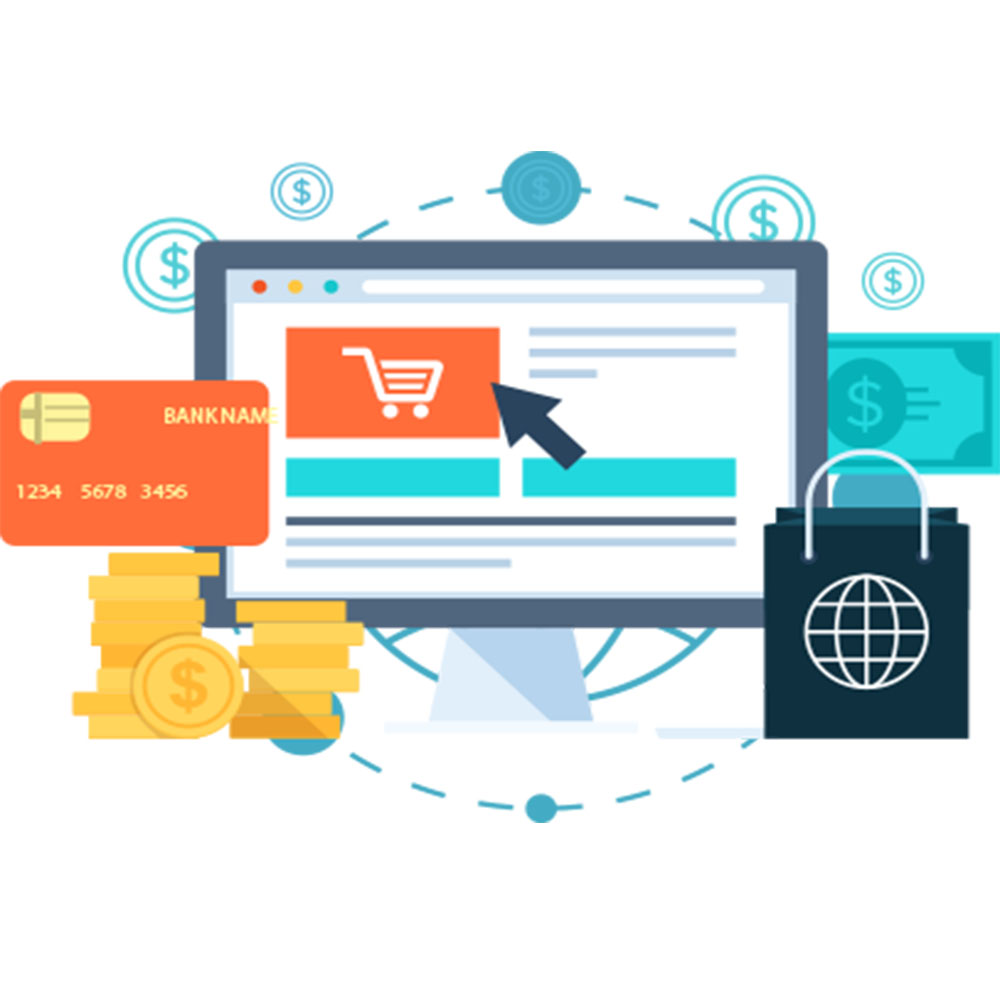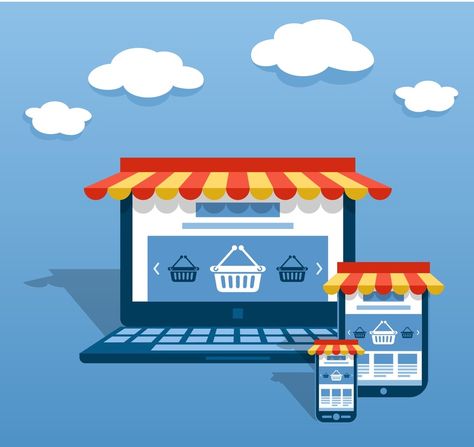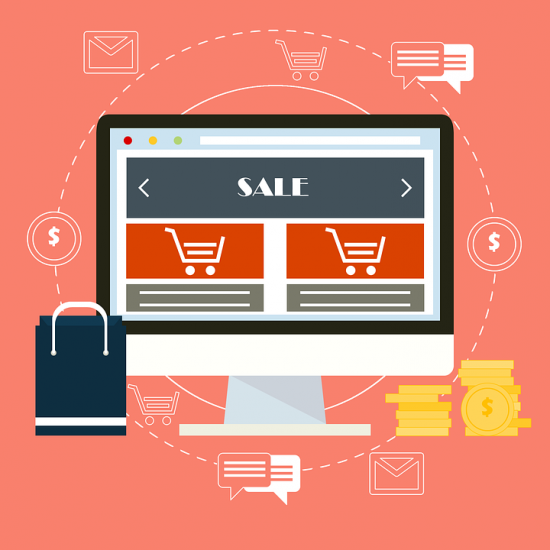
The Impact of Seasonality on E-Commerce Fulfillment & Contract Packaging
In the dynamic realm of e-commerce, businesses must navigate various challenges, with seasonality often proving to be a significant factor influencing operations. Seasonal fluctuations in demand can pose unique hurdles for e-commerce fulfillment and contract packaging services, necessitating strategic planning and adaptation. This comprehensive guide explores the nuanced impact of seasonality on e-commerce fulfillment and contract packaging, drawing insights from real-world case studies, examples, and additional strategies to navigate these challenges effectively and drive success.
Understanding Seasonality’s Dynamics in E-Commerce
Seasonality in e-commerce refers to the cyclical patterns of demand fluctuations that occur throughout the year, driven by factors such as holidays, weather changes, and cultural events. These fluctuations manifest as peak seasons, characterized by heightened consumer activity, and off-peak periods marked by reduced demand. For example, the holiday shopping rush during Black Friday and Cyber Monday contrasts with quieter periods post-holidays.
Example: Amazon’s Prime Day
Amazon’s annual Prime Day event exemplifies the impact of seasonality on e-commerce. Prime Day, typically held in July, generates a surge in online shopping activity, rivalling traditional holiday shopping peaks. During Prime Day, Amazon experiences a significant increase in order volumes, necessitating strategic preparation and resource allocation to meet customer demand effectively.
The Multifaceted Impact on E-Commerce Fulfilment
Seasonal demand fluctuations pose various challenges for e-commerce fulfilment operations. During peak seasons, businesses must contend with surges in order volumes, placing strain on logistics and warehouse capacities. Failure to scale up effectively can result in delayed deliveries, stockouts, and customer dissatisfaction. Conversely, off-peak periods may lead to excess inventory and underutilized resources, resulting in inefficiencies and increased costs.
Walmart’s Holiday Fulfillment Strategy: A Case Study
Walmart, a retail giant, faced challenges in fulfilling orders during the holiday season due to increased demand and supply chain constraints. To address these challenges, Walmart implemented innovative fulfillment strategies, including leveraging its network of stores as distribution centers for online orders. This strategy enabled Walmart to fulfill orders more quickly and efficiently, meeting customer expectations during the busy holiday shopping period.
The Vital Role of Contract Packaging Services
Contract packaging services play a crucial role in supporting e-commerce businesses during periods of fluctuating demand. These specialized providers offer scalability, flexibility, and expertise in managing packaging needs, enabling businesses to adapt seamlessly to changing demand patterns. During peak seasons, contract packagers can ramp up production capacity to meet heightened packaging requirements promptly and efficiently.
Example: HelloFresh’s Partnership with Contract Packagers
HelloFresh, a meal kit delivery service, relies on contract packaging partners to fulfill its orders and deliver fresh ingredients to customers. During peak seasons, such as holidays and special promotions, HelloFresh collaborates closely with its contract packagers to scale up packaging operations and ensure timely delivery of meal kits. This strategic partnership allows HelloFresh to meet customer demand effectively while maintaining product quality and freshness.
Strategies for Strategic Adaptation
To navigate the impact of seasonality effectively, e-commerce businesses can employ several strategic approaches:
Forecasting and Planning:
Utilizing historical sales data, market trends, and predictive analytics empowers e-commerce businesses to anticipate demand fluctuations accurately. By planning inventory levels, production schedules, and staffing requirements accordingly, businesses can ensure they meet anticipated order volumes while minimizing excess inventory or stockouts. This strategic foresight enables efficient resource allocation and enhances operational efficiency during peak seasons.
Scalable Infrastructure:
Investing in scalable warehouse infrastructure, technology, and logistics solutions is paramount for adapting to fluctuating demand levels. Embracing automation technologies, robotics, and artificial intelligence streamlines fulfillment processes, enabling operational agility and responsiveness to changing market dynamics. Scalable infrastructure ensures businesses can effectively scale their operations to meet growing demand without compromising efficiency or quality.
Strategic Partnerships:
Forge strategic partnerships with contract packaging providers that offer flexible production capabilities and a diverse range of packaging solutions. Collaborating closely with these partners aligns production capacity with demand forecasts, ensuring seamless fulfillment operations. Strategic partnerships enhance agility and scalability while optimizing costs and resource utilization, ultimately driving operational excellence and customer satisfaction.
Inventory Optimization:
Robust inventory management practices are essential to minimize stockouts and excess inventory, thus reducing carrying costs and maximizing profitability. Leveraging data analytics, demand forecasting tools, and just-in-time inventory replenishment strategies optimizes inventory levels and ensures products are available when customers demand them. Inventory optimization enhances operational efficiency and enables businesses to meet customer expectations effectively.
Customer Communication:
Keeping customers informed about order processing times, shipping delays, and inventory availability during peak seasons is crucial for managing expectations and enhancing satisfaction. Providing proactive updates, transparency, and personalized communication fosters trust and loyalty, strengthening customer relationships and driving repeat business. Effective customer communication is integral to delivering exceptional shopping experiences and maintaining a competitive edge in the market.
Continuous Improvement:
Regularly evaluating e-commerce fulfillment and packaging processes based on performance metrics, customer feedback, and industry best practices facilitates continuous improvement. Identifying areas for enhancement, implementing corrective measures, and iterating on strategies drive operational excellence and customer satisfaction. Continuous improvement fosters innovation, agility, and resilience, positioning businesses for sustained success in the ever-evolving e-commerce landscape.
Supply Chain Diversification:
Expanding supplier networks and distribution channels mitigates risks associated with disruptions in the supply chain. Diversification enhances resilience and reduces dependency on single suppliers or logistics routes, ensuring continuity of operations and timely delivery of products to customers. Supply chain diversification safeguards against potential disruptions and strengthens the e-commerce ecosystem’s overall resilience.
Dynamic Pricing Strategies:
Implementing dynamic pricing algorithms enables businesses to adjust prices in real-time based on demand fluctuations and market conditions. Dynamic pricing maximizes revenue and profitability by optimizing pricing strategies in response to changes in supply and demand dynamics. By aligning prices with market trends and consumer preferences, dynamic pricing strategies enhance competitiveness and drive revenue growth.
Seasonal Product Bundling:
Creating seasonal product bundles and promotions stimulates sales and capitalizes on consumer preferences during peak seasons. Seasonal bundling strategies enhance product value perception, encourage upselling, and drive incremental revenue. By offering curated bundles tailored to seasonal themes or occasions, businesses can enhance product appeal and increase customer engagement and loyalty.
Localized Marketing Campaigns:
Tailoring marketing efforts to specific geographic regions and cultural preferences resonates with local audiences and enhances relevance and effectiveness. Localized marketing campaigns leverage cultural nuances, language preferences, and regional trends to connect with customers on a personal level. By embracing localization, businesses can drive brand awareness, customer engagement, and sales conversion rates in diverse markets.
Holiday-Themed Packaging:
Introducing holiday-themed packaging designs and branding enhances product appeal and creates a festive shopping experience. Holiday-themed packaging captivates consumers’ attention, evokes positive emotions, and reinforces brand identity and values. By infusing holiday spirit into product packaging, businesses can differentiate their offerings, increase perceived value, and drive purchase intent during festive seasons.
Flexible Return Policies:
Offering flexible return and exchange policies during peak seasons accommodates increased return volumes and customer preferences. Flexible return policies reduce friction in the purchasing process, instill confidence in buying decisions, and enhance customer satisfaction and loyalty. By prioritizing customer convenience and satisfaction, businesses can build trust and loyalty, ultimately driving long-term profitability and success.
Cross-Selling and Upselling:
Implementing cross-selling and upselling strategies maximizes average order value and drives additional revenue during peak periods. Cross-selling suggests complementary products or accessories to enhance the customer’s purchase, while upselling encourages customers to upgrade to a higher-priced option. By leveraging cross-selling and upselling opportunities, businesses can increase revenue per customer and maximize profitability.
Seasonal Staffing Plans:
Developing flexible staffing plans that can scale up or down to meet fluctuating demand levels during peak seasons ensures adequate support and service levels. Seasonal staffing plans optimize resource allocation, minimize labor costs, and enhance operational efficiency. By aligning staffing levels with anticipated order volumes, businesses can deliver exceptional service and maintain productivity during peak periods.
Customer Segmentation:
Segmenting customers based on purchase behavior, demographics, and preferences enables personalized marketing messages and offers. Customer segmentation enhances targeting precision, relevance, and effectiveness, driving higher engagement and conversion rates. By tailoring marketing initiatives to specific customer segments, businesses can optimize marketing spend, maximize ROI, and foster stronger customer relationships.
User-Generated Content Campaigns:
Encouraging customers to create and share user-generated content, such as reviews and testimonials, builds brand advocacy and trust. User-generated content serves as authentic social proof, influencing purchasing decisions and enhancing brand credibility. By fostering community engagement and empowering customers to share their experiences, businesses can amplify their reach and influence in the market.
Loyalty and Rewards Programs:
Launching loyalty and rewards programs incentivizes repeat purchases and fosters long-term customer loyalty. Loyalty programs offer exclusive benefits, rewards, and incentives to encourage customer retention and engagement. By rewarding loyal customers for their patronage and advocacy, businesses can drive customer lifetime value and strengthen brand loyalty and advocacy.
Sustainable Packaging Initiatives:
Investing in sustainable packaging solutions reduces environmental impact and appeals to eco-conscious consumers. Sustainable packaging initiatives demonstrate corporate social responsibility and align with consumers’ values and preferences. By prioritizing sustainability, businesses can differentiate their brand, enhance brand reputation, and attract environmentally conscious consumers.
Holiday Gift Guides:
Creating curated holiday gift guides inspires shoppers and facilitates product discovery during peak shopping seasons. Holiday gift guides showcase popular products, trends, and gift ideas, simplifying the shopping process for customers. By curating gift guides tailored to specific occasions or recipient preferences, businesses can increase visibility, drive sales, and enhance customer satisfaction.
Flash Sales and Limited-Time Offers:
Launching flash sales and limited-time offers creates a sense of urgency and drives impulse purchases. Flash sales and limited-time offers capitalize on scarcity and exclusivity, motivating customers to act quickly to secure discounted deals. By leveraging time-sensitive promotions, businesses can stimulate demand, increase conversion rates, and generate immediate revenue.
Social Media Influencer Partnerships:
Collaborating with social media influencers and brand ambassadors amplifies marketing efforts and reaches new audiences. Social media influencers have a loyal following and influence over their followers’ purchasing decisions. By partnering with influencers to promote products or campaigns, businesses can expand their reach, increase brand awareness, and drive engagement and sales.
Email Marketing Automation:
Implementing email marketing automation workflows delivers targeted messages and promotions based on customer behavior and preferences. Email marketing automation streamlines communication, personalizes messaging, and increases engagement and conversion rates. By automating email campaigns, businesses can nurture leads, retain customers, and drive revenue growth effectively.
Mobile Optimization:
Optimizing the e-commerce website and checkout process for mobile devices caters to the growing number of mobile shoppers. Mobile optimization improves user experience, reduces bounce rates, and increases conversion rates on mobile devices. By prioritizing mobile-friendly design and functionality, businesses can capture a larger share of the mobile-driven market and drive mobile commerce growth.
Customer Reviews Integration:
Integrating customer reviews and ratings into product pages provides social proof and builds trust with potential buyers. Customer reviews influence purchasing decisions and validate product quality and performance. By showcasing positive reviews and testimonials, businesses can enhance credibility, alleviate purchase anxiety, and drive conversion rates.
Virtual Shopping Experiences:
Offering virtual shopping experiences, such as 360-degree product views and virtual try-on tools, enhances online shopping engagement. Virtual shopping experiences replicate the in-store browsing experience, enabling customers to interact with products virtually before making a purchase. By providing immersive and interactive experiences, businesses can increase customer satisfaction and confidence in their purchase decisions.
Localized Customer Service Support:
Providing localized customer service support in multiple languages and time zones addresses customer inquiries promptly and effectively. Localized customer service enhances accessibility, responsiveness, and satisfaction, regardless of customers’ geographic location. By offering personalized and timely support, businesses can enhance customer experiences and foster loyalty and advocacy.
AI-Powered Personalization:
Utilizing artificial intelligence and machine learning algorithms delivers personalized product recommendations and shopping experiences. AI-powered personalization analyzes customer data and behavior to offer relevant and tailored recommendations. By delivering personalized experiences across channels, businesses can increase engagement, conversion rates, and customer lifetime value.
Subscription Services:
Introducing subscription-based services offers convenience and recurring revenue streams for products with predictable demand. Subscription services provide customers with hassle-free access to products or services on a recurring basis. By offering subscription options, businesses can drive customer retention, revenue predictability, and long-term profitability.
Geolocation Targeting:
Utilizing geolocation technology to deliver personalized offers and promotions based on a customer’s location increases relevance and engagement. Geolocation targeting leverages location data to offer location-specific deals or promotions, enhancing the customer’s shopping experience. By delivering hyper-targeted offers, businesses can drive foot traffic to physical stores or increase online sales in specific regions.
Product Customization Options:
Offering product customization options allows customers to personalize their purchases, catering to individual preferences and increasing perceived value. Product customization empowers customers to tailor products to their unique needs, tastes, or preferences. By offering customization options, businesses can differentiate their offerings, increase customer satisfaction, and command premium pricing.
Social Commerce Integration:
Integrating social commerce features into e-commerce platforms enables customers to make purchases directly from social media channels, leveraging user-generated content and social proof to drive sales. Social commerce integration facilitates seamless shopping experiences and enhances convenience and accessibility for customers. By capitalizing on social commerce channels, businesses can increase brand visibility, reach new audiences, and drive conversions.
Gamification Elements:
Incorporating gamification elements such as loyalty points, badges, and challenges into the shopping experience enhances engagement, fosters brand loyalty, and encourages repeat purchases. Gamification elements add an element of fun and excitement to the shopping journey, motivating customers to interact with the brand and its products. By gamifying the shopping experience, businesses can increase customer engagement, retention, and lifetime value.
Virtual Assistant Support:
Implementing virtual assistant support, such as chatbots or voice assistants, provides personalized product recommendations, answers customer inquiries, and facilitates seamless shopping experiences. Virtual assistant support enhances customer service efficiency and accessibility, addressing common queries and concerns in real-time. By leveraging virtual assistant technology, businesses can enhance customer satisfaction, reduce support costs, and streamline the shopping journey.
Augmented Reality (AR) Product Visualization:
Integrating AR technology allows customers to visualize products in their real-world environment before making a purchase, reducing uncertainty and increasing confidence in buying decisions. AR product visualization enhances product discovery and provides a more immersive shopping experience. By enabling customers to interact with products virtually, businesses can reduce returns, increase conversion rates, and enhance customer satisfaction.
Community Building Initiatives:
Fostering a sense of community among customers by hosting online forums, social media groups, or live events enables customers to connect, share experiences, and engage with the brand and each other. Community building initiatives strengthen brand loyalty, foster advocacy, and deepen customer relationships. By nurturing a community of loyal customers, businesses can drive engagement, retention, and brand loyalty over time.
Conclusion:
In conclusion, mastering the impact of seasonality on e-commerce fulfillment and contract packaging requires strategic adaptation, proactive planning, and collaborative partnerships. By understanding the dynamics of seasonal fluctuations, leveraging the expertise of contract packaging services, and implementing strategic approaches, e-commerce businesses can navigate challenges effectively, optimize operations, and drive success. Through continuous improvement, innovation, and agility, businesses can thrive in the dynamic world of e-commerce and capitalize on seasonal opportunities for growth and expansion. With proactive planning, collaborative partnerships, and a commitment to continuous improvement, e-commerce enterprises can not only weather seasonal peaks and valleys but also position themselves for sustained success in the ever-evolving marketplace




